Are Push Walkers Bad for Babies?
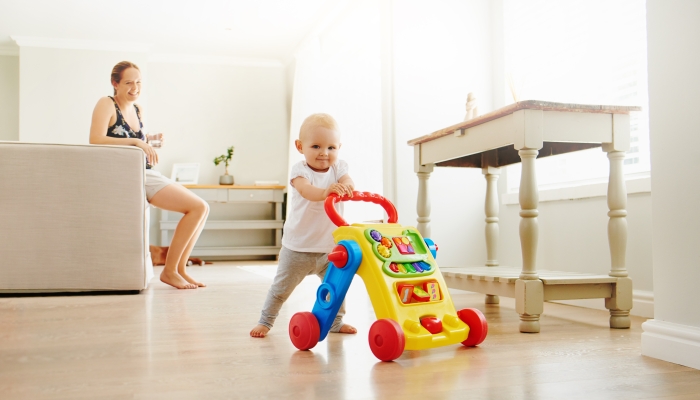
- Push walkers are toys that a baby can hold onto while walking around.
- Babies who need to build confidence may benefit from using a push walker.
- Some push walkers may negatively affect a child’s walking skills.
- Always supervise your child closely while they’re using a push walker or any other balance toy.
Many parents, especially first-time parents, can get overwhelmed by the amount of baby gadgets, equipment, and toy options in stores and online. Advertisers often claim that their toy, push walker, bouncy seat, jumper, or activity center will help your baby develop gross and fine motor skills.
However, it’s important to research and find out which toys are actually helpful for your child’s development and which are harmful.
Traditional baby walkers are one product that can confuse new families. As a parent trying to help your child learn to walk, you might be wondering if push walkers are bad for babies. The reality is that there are both advantages and disadvantages you’ll need to consider before deciding to use one.
Push Walkers: Should Your Baby Use One?
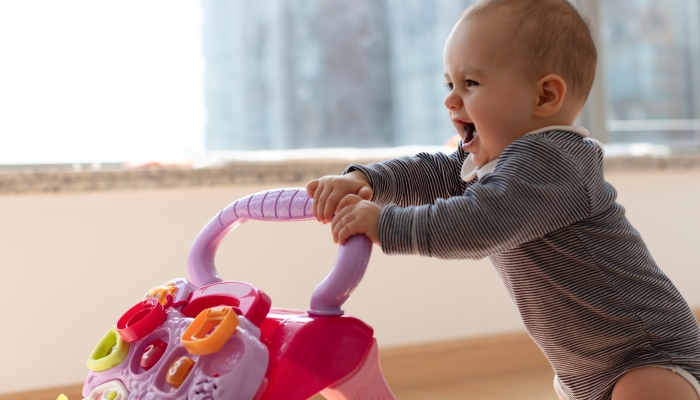
There are many different types of walkers and push toys that are designed to help your child start walking. These range from sit-in walkers to push walkers to toys that simply motivate your child to get moving.
Most baby walkers and push toys are designed for babies ages 6–24 months of age. Babies this age are curious, want to see the world, and have a drive to explore.
This is why young children enjoy using a push walker—it helps them remain upright and makes mobility easier. However, some children may start to rely too much on the walker and may develop bad walking habits or improper alignment.
There are pros and cons to using a baby walker. To decide if your baby should use a push walker, let’s take a look at some of these.
Cons of Push Walkers
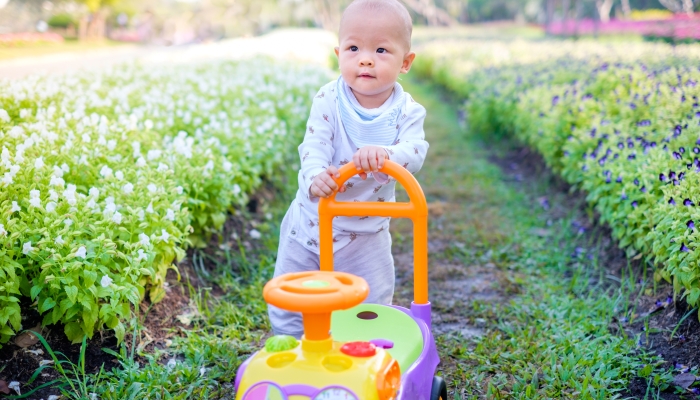
A study from 201711. Badihian, S., Adihian, N., & Yaghini, O.. The Effect of Baby Walker on Child Development: A Systematic Review. Iranian journal of child neurology. 2017;11(4), 1–6. https://www.ncbi.nlm.nih.gov/pmc/articles/PMC5703622/#:~:text=A%20cross-sectional%20study%20was,later%20in%20this%20group%20significantly. found that children who used walkers and other assistive devices usually reached developmental milestones like walking and standing later than children who did not use them.
However, the study did not specify what type of walker the babies used, and this information may have made a significant difference in the results.
Besides the potential for delaying walking, there are a few other reasons families may choose to avoid push walkers. These include:
- Negative impact on natural gait and motor development.
- Potential for accidents and injuries.
- A false sense of security leads to less supervision.
Because there are risks associated with some types of walkers, you may want to look at some alternatives to baby walkers.
Pros of Push Walkers
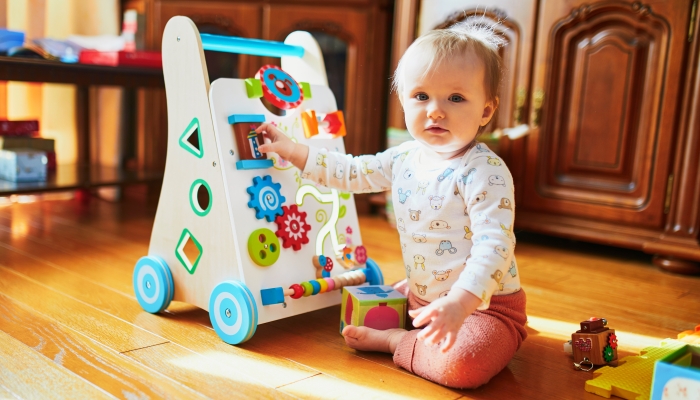
While there are some risks associated with using push walkers, there are also many valid arguments supporting the use of push walkers.
Parents who are worried about their child should keep in mind that push toys are not the same as sit-in walkers. Sit-in walkers are banned in many countries, and experts strongly recommend22. McCarthy, C.. Parents: Don’t use a baby walker. Harvard Health. 2018. https://www.health.harvard.edu/blog/parents-dont-use-a-baby-walker-2018092714895 that parents avoid using them. However, push walkers have fewer safety risks, and may even help a nervous child take their first steps.
The benefits of push walkers include:
- Building confidence and strength.
- Encouraging mobility and exploration.
- Assisting babies with mobility problems or developmental delay.
- Providing a fun way for children to increase mobility and explore.
If you choose to use a baby walker, do your research to make sure you choose one of the best baby walkers for your family.
Safety Considerations
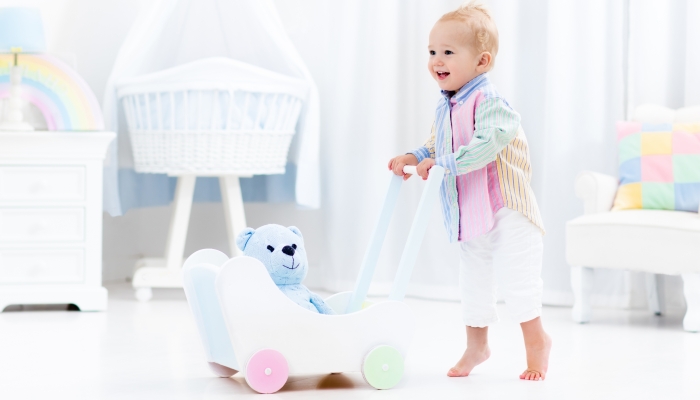
When using a push walker for your child, there are a few important safety considerations to keep in mind:
- Choosing the right model and features for safety: Not all push toys have the same risks and benefits. For example, wheeled baby walkers are much more likely to move too quickly or slip out of your child’s hand. Infant walkers without wheels and sturdy push toys are safer alternatives to traditional baby walkers.
- Appropriate timing and frequency of use: While walking toys can help younger babies get themselves into a standing position, frequent use of these baby products can prevent leg muscles from developing correctly and may encourage bad habits like toe walking. Babies learning to stand and balance on their own may benefit from the occasional use of a baby walker to build confidence. However, relying on these tools can slow the development of your child’s gross motor skills.
- Supervision: Before babies become mobile, they can be left to enjoy some floor time for a moment while you use the bathroom or brush your teeth. However, as your child becomes more mobile and begins learning to walk, they will need constant supervision. Push walkers may increase your child’s speed and mobility, allowing them to reach dangerous objects, get to the stairs more quickly, or even climb to high surfaces. Never allow your baby to play with a push toy without supervision.
- Environmental considerations: According to the Journal of Injury Epidemiology33. Chaudhary, S., Figueroa, J., Shaikh, S., Mays, E. W., Bayakly, R., Javed, M., Smith, M. L., Moran, T. P., Rupp, J., & Nieb, S.. Pediatric falls ages 0-4: understanding demographics, mechanisms, and injury severities. Injury epidemiology. 2018;5(Suppl 1), 7. https://doi.org/10.1186/s40621-018-0147-x , unintentional falls are the leading cause of emergency room visits and serious injuries in children under the age of 5. If you allow your child to use a push toy or walker, make sure that they do not have access to staircases, cannot climb onto high surfaces, and that all tripping hazards are out of the way.
Using baby gates is not a good substitute for parental supervision.
Helping Your Baby Learn to Walk
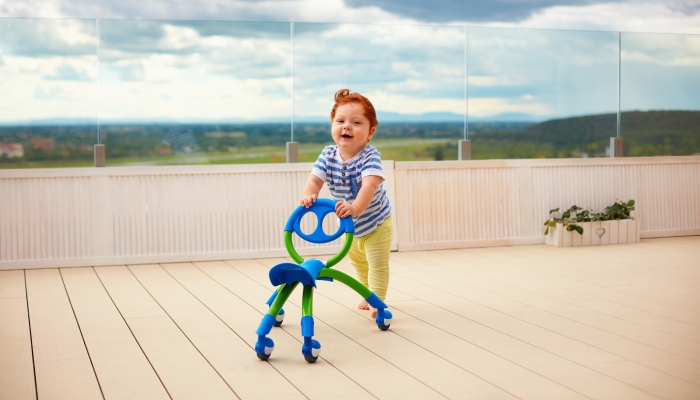
While push walkers can be fun for your child and offer a good way for them to build confidence and get excited about walking, there are some safer alternatives you can use to encourage your baby to take their first steps.
Here are some tips for helping your baby learn to walk:
- Set your baby down in a standing position instead of sitting.
- Sit near your baby and encourage them to pull themselves up using a couch or chair.
- Extend your arms and encourage your standing baby to move towards you.
- Hold objects up over their head so they reach their arms up and practice balancing.
- Be patient and allow your baby to develop at their own pace.
FAQs
How can push walkers impact a baby’s hip development and posture?
Push walkers may encourage your baby to lean forward and walk with a wider gait. This not only impacts their posture and hip development but can slow their progress towards walking unassisted.
How does the use of push walkers compare with a baby crawling for development?
While push walkers look fun and can help children get motivated to become more mobile, crawling is a better way for babies to develop their gross motor skills. Remember that each child develops at a different pace and that a few extra months of crawling will not affect your baby in the long term.
References
- Badihian, S., Adihian, N., & Yaghini, O. (2017). The Effect of Baby Walker on Child Development: A Systematic Review. Iranian journal of child neurology, 11(4), 1–6. https://www.ncbi.nlm.nih.gov/pmc/articles/PMC5703622/#:~:text=A%20cross-sectional%20study%20was,later%20in%20this%20group%20significantly.
- McCarthy, C. (2018, September 27). Parents: Don’t use a baby walker. Harvard Health. https://www.health.harvard.edu/blog/parents-dont-use-a-baby-walker-2018092714895
- Chaudhary, S., Figueroa, J., Shaikh, S., Mays, E. W., Bayakly, R., Javed, M., Smith, M. L., Moran, T. P., Rupp, J., & Nieb, S. (2018). Pediatric falls ages 0-4: understanding demographics, mechanisms, and injury severities. Injury epidemiology, 5(Suppl 1), 7. https://doi.org/10.1186/s40621-018-0147-x
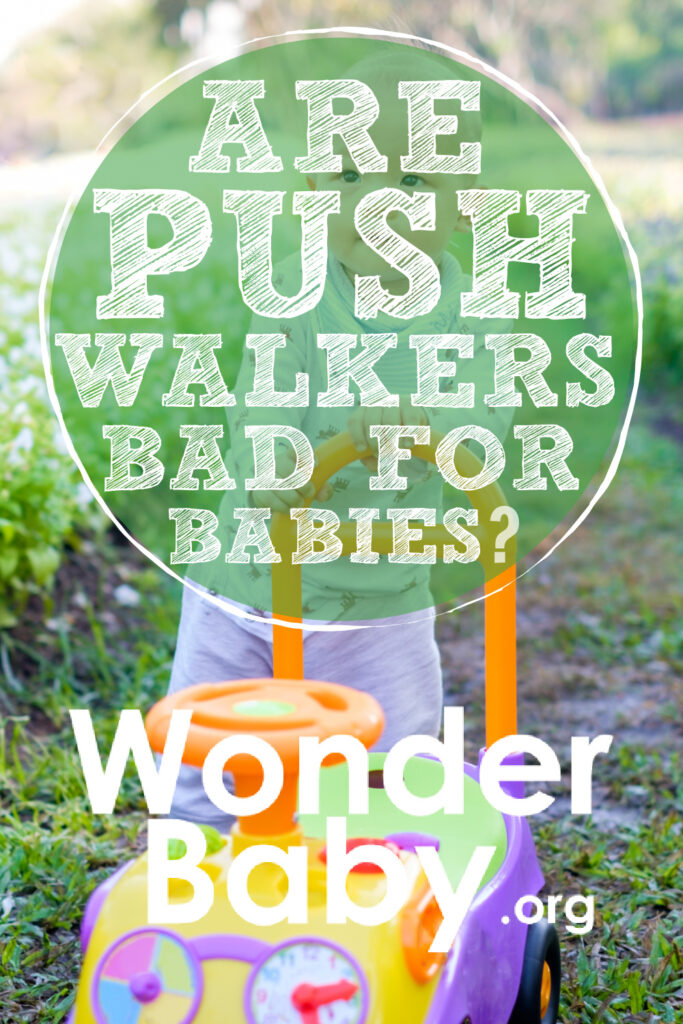
The information WonderBaby provides is not intended to be, and does not constitute, medical or other health advice or diagnosis and should not be used as such. Always consult with a qualified medical professional about your specific circumstances.
Related Posts
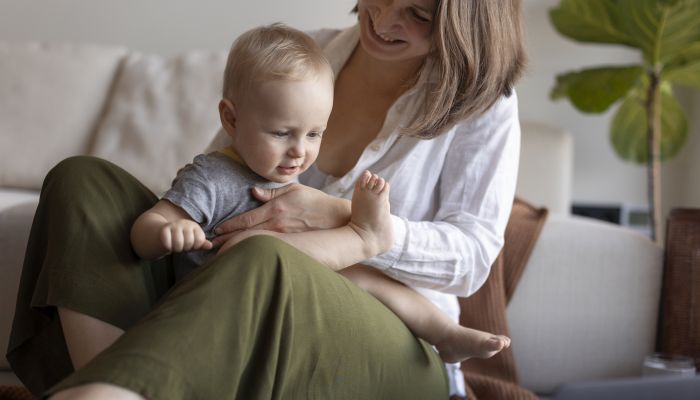
Fine and Gross Motor
5 Alternatives to Tummy Time for Babies with Motor Development Challenges
Does your baby struggle with tummy time due to motor development challenges? These alternatives to tummy time will offer the same benefits.

Fine and Gross Motor
Understanding Hypotonia & Hypertonia: What Parents Need to Know
Altered muscle tone can affect your child’s development. Learn more about ways you can help your child by understanding hypertonia and hypotonia.

Fine and Gross Motor
4 Static Balance Activities for Kids
These four fun exercises will boost your child's static balance and coordination. They improve postural balance and strengthen core and glute muscles.